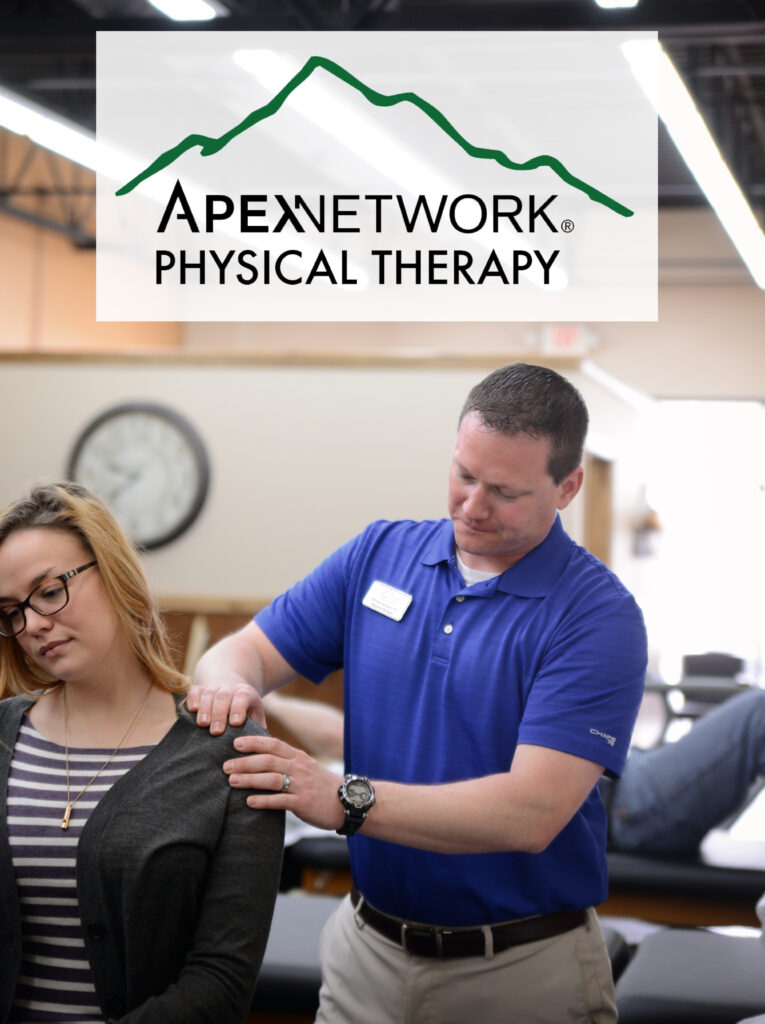 By: Lori Toennies, PT and Clinic Manager at ApexNetwork Physical Therapy in Lebanon, IL
By: Lori Toennies, PT and Clinic Manager at ApexNetwork Physical Therapy in Lebanon, IL
Shoulder pain is one of the common complaints that we treat in our therapy clinics every day. Shoulder pain accounts for roughly 3 million visits to physicians every year in the US. Of these, rotator cuff disease is the most common cause.¹
The shoulder joint consists of three bones, the humerus (upper arm bone), scapula (shoulder blade), and clavicle (collar bone). Shoulder joints have a lot of mobility, allowing movement in many directions and even in a full circle. This causes the joint to be inherently less stable. A group of four muscles surrounding the shoulder joint help to improve that stability. These muscles collectively are referred to as the rotator cuff. The rotator cuff includes the supraspinatus, infraspinatus, subscapularis, and teres minor muscles. These muscles each have their own job to do, but combined they help to maintain the head of the humerus firmly in the joint socket.
The concept of rotator cuff impingement was first introduced by Charles S. Neer, II, MD in the literature in 1972. He stated that it results from the mechanical impingement of the rotator cuff tendon beneath the acromion process, a bony prominence on the scapula, especially when the shoulder is placed in the forward-flexed and internally rotated position.² Many individuals stand and sit with a slumped shoulder posture that predisposes them to develop impingement syndrome. Repeated use overhead and age are also factors that increase the likelihood of developing impingement syndrome.
Typically treatment of impingement syndrome consists of anti-inflammatory medications, ice, and physical therapy. A physical therapist can provide anti-inflammatory modalities, and develop a stretching and strengthening program specific to your impairments, including improving postural deficits. If left untreated, impingement syndrome can lead to tendonitis and eventually rotator cuff tear.
-
Praemer AFS, Rice D. Musculoskeletal conditions in the United States. 2nd ed. Rosemont, IL: American Academy of Orthopaedic Surgeons, 1999.
-
Neer CS 2nd. Anterior acromioplasty for the chronic impingement syndrome in the shoulder: a preliminary report.J Bone Joint Surg Am. 1972 Jan. 54(1):41-50.
